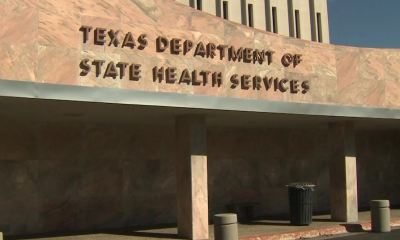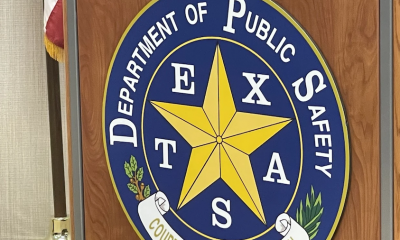U.S. News
Dallas-Fort Worth gets a failing grade again for its air quality, study finds
DALLAS, TX— The air across Dallas-Fort Worth remains unhealthy to breathe, the American Lung Association found.
Collin, Dallas, Denton and Tarrant Counties all have a high level of ozone pollution, for which each got an “F” grade in the State of the Air 2021 report.
And the quality of the air has actually gotten worse over the past year, the report found. The number of unhealthy days of high ozone went up year-over-year in cities across Texas, including Austin, Dallas, Fort Worth, Houston, and El Paso.
But that wasn’t the case for American cities at large.
Between 2017 and 2019, more than 123.2 million people in the U.S. lived in counties that got an “F” for ozone levels, a significantly lower number than previous years, the report found. That means about 3 out of every 8 people live somewhere with an “F” grade in ozone air pollution.
Researchers attributed the high levels of ozone pollution to warming temperatures as we’ve seen some of the hottest years on record globally. With climate change driving warmer temperatures, they warn, ozone pollution is more likely to form and becomes more difficult to clean up.
While ozone levels remain problematic, Dallas County’s average annual concentration of particle pollution remained acceptable, the report found, giving it a “pass” grade, while its annual average number of high particle pollution days got a “C,” a passing grade, as well.
Overall, the county has seen a consistent downward trend in these levels of pollution over the past 20 or so years, with the air getting widely cleaner as time goes on. But, within the last few years, levels have started to rise again.
But in Tarrant County, the outlook when it comes to particle pollution is much better. There, they not only got a “pass” grade for the average annual concentration of particle pollution, but the report also gave the county an “A” for the annual average number of high particle pollution days.
Tarrant County has steadily seen particle pollution levels continue to fall or remain stagnant.
The report did not include data for Collin or Denton County on particle pollution.
Even with its “C” grade, Dallas County did not fare as poorly as other counties across the country.
Around 20.7 million people, about 6.3% of the country’s population, live in counties that failed all three measures of air pollution, the report said.
Researchers found that often, the people living with the worst quality air were people of color.
Of the 20.7 million living in the worst conditions in the U.S., about 14 million are people of color, according to the report.
“People of color were 61% more likely than white people to live in a county with a failing grade for at least one pollutant, and over three times as likely to live in a county with a failing grade for all three pollutants,” the report stated.
While the D-FW area didn’t fail all three, overall, the air here still isn’t that great. Dallas-Fort Worth ranked 17 out of 229 metropolitan areas across the country for high ozone days and still is in the top 50 for particle pollution levels.
So what exactly is ozone or particle pollution?
Ozone is an invisible pollutant that can be extremely bad for one’s health, according to the American Lung Association. The pollutant is “currently one of the least-well-controlled… in the U.S” and can be deadly.
It’s known better as smog, which is produced when ozone mixes with other pollutants. It can be harmful to breathe, particularly because of how it chemically reacts with the tissue in your lungs, according to the American Lung Association.
You’ve probably heard of ozone before, in reference to the ozone layer. That’s a good layer of the gas that protects the earth from ultraviolet radiation from the sun.
But when ozone gets produced and concentrated on the ground, it can be deadly, particularly for those who already have difficulty breathing.
Ozone is created from certain gases that come from burning fossil fuels (think a car’s tailpipe) or from when chemicals evaporate. When those gases get hit with sunlight, ozone smog is created.
People who work or exercise outside, those with asthma or COPD, anyone over the age of 65, and children and teens are particularly vulnerable to ozone pollution, the American Lung Association said. The pollution itself can cause immediate breathing problems or premature death when levels are high.
Particle pollution also can come from your tailpipes— it’s the “dirty” part of your exhaust, essentially made up of tiny particles that can be harmful to breathe in, the American Lung Association explains. The smaller those particles become, the harder it is for our bodies to keep them out, allowing the smallest ones to enter our lungs and bloodstreams.
Those exposed to particle pollution have a higher risk of heart disease, lung cancer and asthma attacks, according to the American Lung Association. Researchers say this kind of pollution alone can cause lung cancer too.
People who are obese, low-income, current and former smokers, have cardiovascular or lung disease are all at a greater level of risk from particle pollution, along with people of color and those under the age of 18.
Both types of pollution can cause premature death, according to the American Lung Association, as well as problems like asthma attacks and cardiovascular damage. Developmental and reproductive harm has also been linked to high pollution levels.










